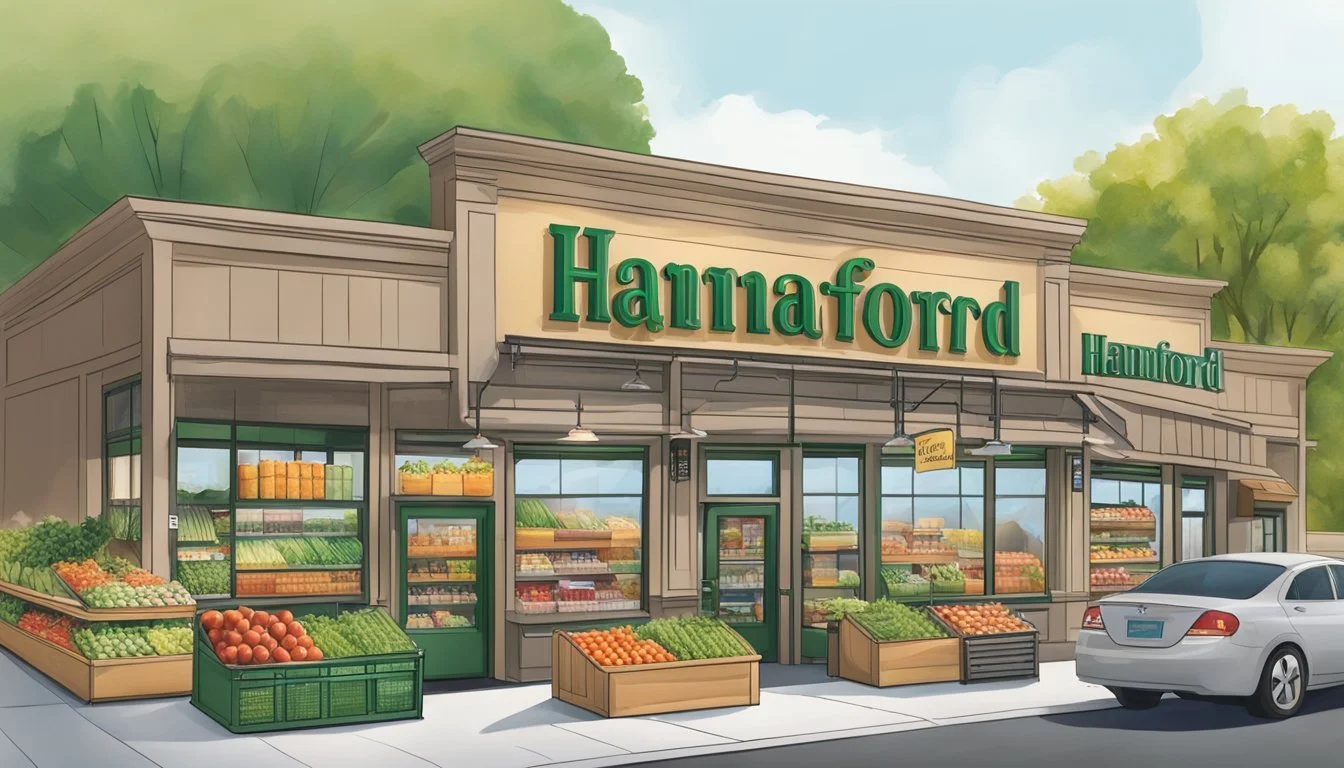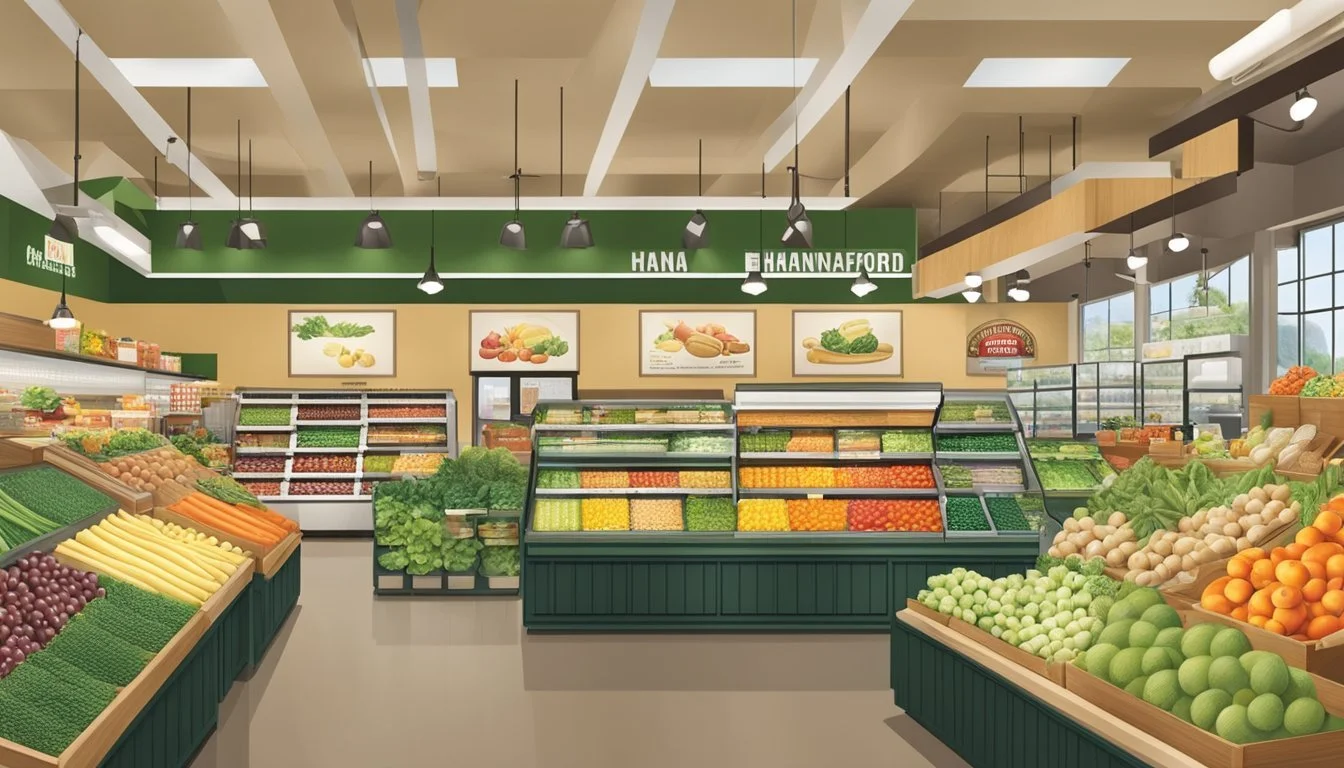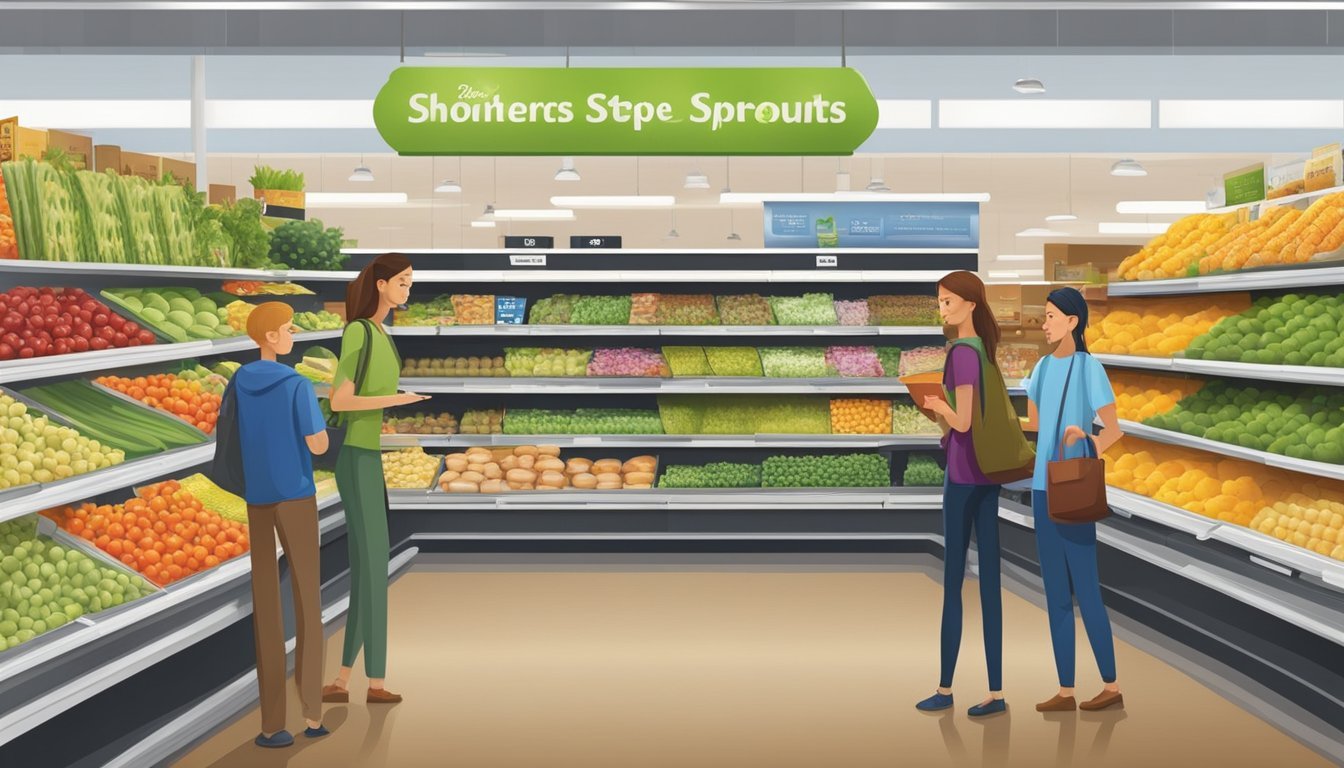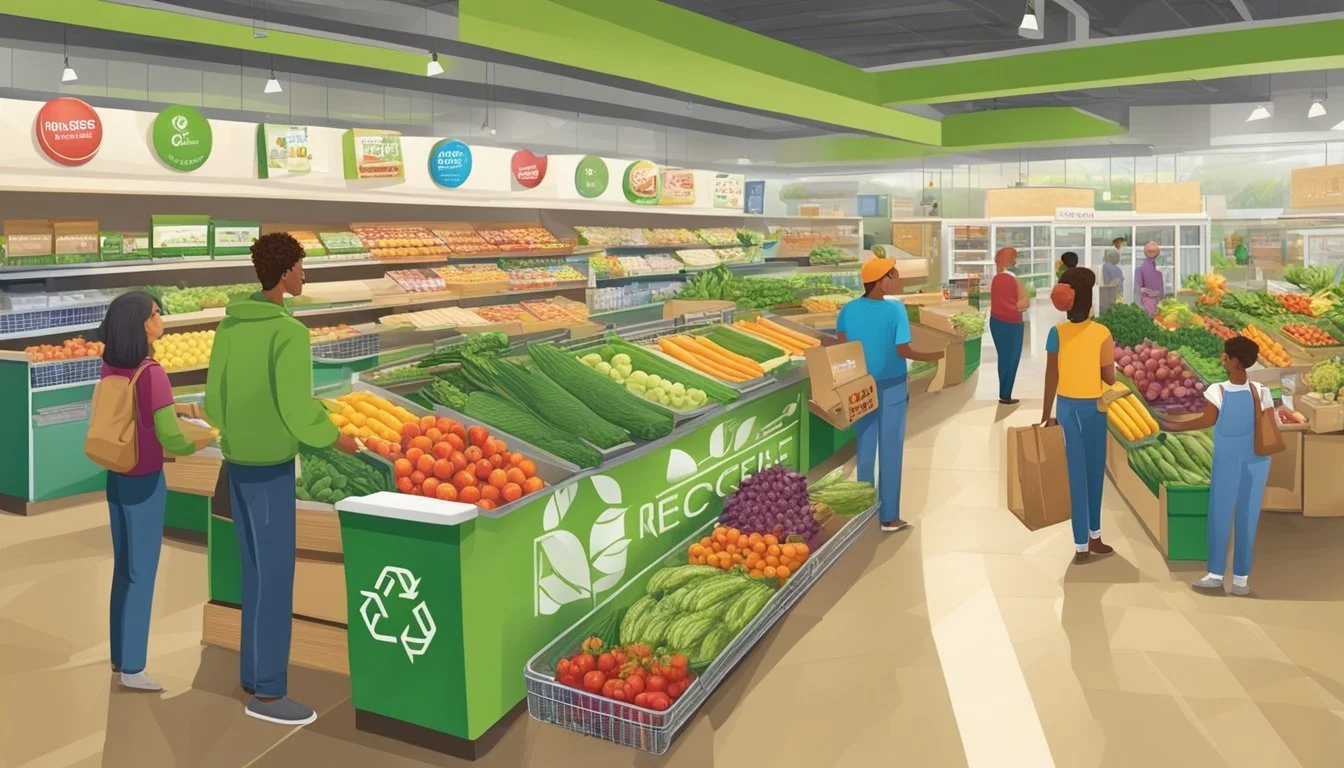Hannaford vs Sprouts
A Comprehensive Comparison of Quality and Value
Hannaford and Sprouts Farmers Market represent two distinct approaches to grocery shopping in the United States. Both chains have garnered loyal customer bases, but they cater to different preferences and priorities.
Sprouts Farmers Market generally offers a wider selection of organic and natural products compared to Hannaford, making it a top choice for health-conscious shoppers. However, Hannaford tends to provide more competitive prices on everyday staples and a broader range of conventional grocery items.
The shopping experience differs between these two retailers. Sprouts emphasizes a farmers market-style atmosphere with an extensive produce section, while Hannaford offers a more traditional supermarket layout. Ultimately, the better choice depends on individual shopping habits, dietary preferences, and budget considerations.
Company Overviews
Hannaford and Sprouts Farmers Market are two distinct grocery chains with unique histories and approaches to serving customers. Each has shaped its identity through decades of growth and adaptation to changing consumer needs.
Hannaford's History and Mission
Hannaford traces its roots back to 1883 when Arthur Hannaford began selling produce from a cart in Portland, Maine. The company grew steadily, opening its first supermarket in 1944. Today, Hannaford operates over 180 stores across five Northeastern states.
The chain focuses on offering fresh, high-quality products at competitive prices. Hannaford emphasizes customer service and community involvement. Their stores feature full-service pharmacies and a wide selection of organic and natural foods.
Hannaford's mission centers on helping customers live healthier lives through nutritious food choices and wellness education. The company has implemented sustainability initiatives, including energy-efficient store designs and local sourcing programs.
Sprouts Farmers Market's Vision and Growth
Sprouts Farmers Market was founded in 2002 in Chandler, Arizona. The chain rapidly expanded, positioning itself as a health-focused alternative to traditional supermarkets. Sprouts now operates over 370 stores across 23 states.
The company's vision revolves around making fresh, natural, and organic foods accessible to all. Sprouts stores are known for their farmers market-style layout and extensive produce sections. They offer a wide array of bulk foods, vitamins, and supplements.
Sprouts emphasizes value pricing on natural and organic items. The chain has experienced significant growth through both new store openings and strategic acquisitions. Sprouts aims to educate customers about healthy eating and sustainable living through in-store events and community partnerships.
Store Presence
Hannaford and Sprouts have distinct regional footprints and varying impacts on the national supermarket landscape. Their store locations and expansion strategies shape their market presence and accessibility for shoppers.
Regional Stores Comparison
Hannaford operates primarily in the northeastern United States. The chain has approximately 180 stores across Maine, New Hampshire, Vermont, Massachusetts, and New York. Hannaford's dense concentration in these states allows it to cater to local preferences and build strong community ties.
Sprouts Farmers Market has a broader geographical reach. With over 370 stores, Sprouts spans 23 states, primarily in the South, Southwest, and West Coast regions. This wider distribution gives Sprouts a presence in more diverse markets.
National Supermarket Impact
In the national supermarket scene, Hannaford and Sprouts face competition from retail giants like Walmart, Target, and Amazon. Hannaford's regional focus limits its national impact, but it maintains a strong presence in its core markets.
Sprouts has a more substantial national footprint. Its expansion strategy targets health-conscious consumers across the country. This approach has helped Sprouts carve out a niche in the natural and organic foods sector.
Both chains must contend with the growing influence of e-commerce. Amazon's entry into the grocery space, particularly through Whole Foods, has shifted the competitive landscape. Hannaford and Sprouts have responded by enhancing their digital offerings and delivery services.
Product Selection
Hannaford and Sprouts offer diverse product selections to meet various customer needs. Both stores prioritize fresh, quality ingredients but differ in their focus and specialty areas.
Fresh Produce Analysis
Hannaford provides a wide array of fruits and vegetables, sourcing from local farms when possible. Their produce section features both conventional and organic options.
Sprouts, true to its name, excels in fresh produce. The store layout typically centers around an extensive produce department. Sprouts offers a larger variety of unique and seasonal fruits and vegetables compared to Hannaford.
Both stores maintain high standards for freshness, but Sprouts often edges out in terms of selection and specialty items.
Organic Food Options
Hannaford has expanded its organic offerings in recent years. They stock organic versions of staple items across multiple departments.
Sprouts, however, specializes in natural and organic products. A significant portion of their inventory is organic, including produce, packaged goods, and bulk items.
For customers prioritizing organic options, Sprouts provides a more comprehensive selection. Hannaford offers a solid organic range but may not match Sprouts' breadth in this category.
Meat and Seafood Quality
Hannaford takes pride in its meat and seafood departments. They offer a variety of cuts and options, including organic and grass-fed meats. Their seafood often includes local catches and sustainably sourced options.
Sprouts also maintains high standards for its meat and seafood. They focus on natural and organic options, with many antibiotic-free and hormone-free choices.
Both stores prioritize quality, but Hannaford may have a slight edge in variety, especially for conventional meat options.
Bakery and Prepared Foods
Hannaford's bakery department produces a range of fresh-baked goods daily. Their prepared foods section offers hot and cold options for quick meals.
Sprouts' bakery focuses more on healthier alternatives, including gluten-free options. Their prepared foods section, while smaller than Hannaford's, emphasizes natural ingredients and health-conscious choices.
Hannaford typically offers a larger selection of traditional baked goods and prepared meals. Sprouts caters more to health-focused consumers with their bakery and prepared food options.
Price and Affordability
Hannaford and Sprouts offer different pricing strategies and product selections that impact overall affordability. Their approaches to everyday prices, discounts, and organic goods pricing vary significantly.
Everyday Prices and Discounts
Hannaford focuses on competitive everyday low prices across its stores. They regularly offer weekly specials and digital coupons to help customers save. Sprouts, on the other hand, employs a hybrid pricing model. They feature competitive prices on produce and bulk items, while other departments may have higher price points. Sprouts runs frequent sales, especially on organic items, and provides a weekly ad with deals.
Hannaford's My Hannaford Rewards program allows shoppers to earn points on purchases and receive personalized coupons. Sprouts offers a mobile app with digital coupons and exclusive deals for members. Both stores provide opportunities for savings, but the specific products on sale can differ greatly.
Comparison of Organic Goods Pricing
Organic produce tends to be more affordable at Sprouts compared to Hannaford. Sprouts often runs promotions on organic fruits and vegetables, making them more accessible to budget-conscious shoppers. However, Hannaford has been expanding its organic offerings and sometimes features competitive prices on select organic items.
For packaged organic goods, prices can vary. Sprouts may have lower prices on some specialty organic brands, while Hannaford might offer better deals on mainstream organic products. It's worth noting that Sprouts' larger selection of organic items can lead to more diverse pricing options within this category.
Hannaford's Nature's Place private label provides organic options at lower price points than national brands. Sprouts also offers its own line of organic products, which can be price-competitive with similar items at Hannaford.
Shopping Experience
Hannaford and Sprouts offer distinct shopping experiences, each with unique features that cater to different customer preferences. Their store layouts, customer service approaches, and checkout processes shape how shoppers interact with the brands.
In-Store Amenities and Layout
Hannaford stores typically feature wide aisles and clear signage, making navigation easy for customers. Their layout often includes a well-stocked produce section near the entrance, followed by deli and bakery departments. Sprouts, on the other hand, designs its stores with a farmers market-style layout. The center of Sprouts stores usually showcases fresh produce, surrounded by bulk foods and specialty items.
Both chains prioritize cleanliness, maintaining tidy shelves and floors. Hannaford often includes a pharmacy within its stores, offering added convenience for shoppers. Sprouts focuses more on natural and organic products, with dedicated sections for vitamins and supplements.
Customer Service and Staff Courtesy
Staff courtesy plays a crucial role in the shopping experience at both chains. Hannaford employees are known for their friendly demeanor and willingness to assist customers. They often receive training to provide knowledgeable answers about product locations and store policies.
Sprouts emphasizes customer education, with staff members trained to offer information about natural and organic products. Their employees are typically well-versed in dietary restrictions and can provide recommendations for specific health needs.
Both chains strive to maintain a positive atmosphere, with staff members greeting customers and offering help throughout the store.
Checkout Efficiency
Hannaford implements a mix of traditional checkout lanes and self-checkout options to reduce wait times. They often have dedicated express lanes for customers with fewer items. During peak hours, Hannaford typically opens additional registers to manage increased traffic.
Sprouts also offers both staffed and self-checkout options. Their stores usually have fewer checkout lanes compared to Hannaford, but they aim to compensate with efficient scanning and bagging processes. Sprouts cashiers are trained to handle produce codes quickly, as fresh items make up a significant portion of many customers' purchases.
Both chains have implemented contactless payment options and mobile apps to streamline the checkout process further.
Consumer Perception and Ratings
Survey data and online reviews provide valuable insights into how shoppers view Hannaford and Sprouts. These consumer perspectives offer a clearer picture of each store's strengths and weaknesses.
Survey Data and Consumer Reports
Consumer Reports surveyed over 75,000 members about their grocery shopping experiences. Hannaford received positive ratings in several categories. Customers praised the cleanliness of Hannaford stores and the quality of their produce. The chain also scored well for its competitive prices.
Sprouts was not included in the main Consumer Reports rankings. However, the company has gained recognition for its focus on natural and organic products. This specialty approach appeals to health-conscious shoppers.
Online Reviews and Feedback
On review sites like Yelp and Google, Hannaford stores typically earn 3.5 to 4-star ratings. Customers frequently mention:
Friendly staff
Well-organized layouts
Good selection of local products
Sprouts stores often receive similar ratings, with reviewers highlighting:
Fresh produce selection
Bulk food options
Knowledgeable employees
Both chains face some criticism for prices, especially on non-sale items. Sprouts receives more comments about its unique product offerings, while Hannaford earns praise for its familiar, reliable shopping experience.
Loyalty Programs and Savings Incentives
Hannaford and Sprouts offer distinct loyalty programs to reward customers and incentivize purchases. These programs provide various benefits, from exclusive discounts to personalized savings opportunities.
Member Benefits and Exclusive Discounts
Hannaford recently launched its first-ever loyalty program. Members receive 2% rewards on store brand purchases and access to digital coupons tailored to their preferences. The program also offers free groceries to new sign-ups as an incentive.
Sprouts' loyalty program is accessible through their mobile app. Members gain access to weekly specials, monthly grocery deals, and department-specific discounts. These include 10% off vitamins and body care for every $100 spent, and 10% off when purchasing four or more bottles of wine.
Both stores focus on providing savings on organic produce, a key segment for health-conscious shoppers.
Comparison of Reward Structures
Hannaford's program emphasizes store brand purchases, offering a straightforward 2% reward. This structure encourages customers to choose Hannaford's own products over national brands.
Sprouts takes a broader approach, offering varied discounts across different departments. Their program includes rotating specials and bulk product discounts, appealing to customers who shop across multiple categories.
Neither program requires a paid membership, unlike some competitors such as Amazon Prime or Kroger's Boost program. This makes both Hannaford and Sprouts' loyalty offerings more accessible to a wider range of customers.
Community and Environmental Initiatives
Hannaford and Sprouts both demonstrate strong commitments to their communities and the environment. These grocery chains engage in initiatives that support local farmers, promote sustainability, and provide fresh, organic options to customers.
Local Farmers Market Collaborations
Hannaford partners with local farmers to bring fresh, seasonal produce to its stores. The chain hosts in-store farmers markets, allowing customers to purchase directly from regional growers. This initiative supports the local economy and reduces transportation emissions.
Sprouts takes a similar approach, emphasizing relationships with local producers. The chain's stores feature dedicated sections for locally-sourced items, clearly labeled to highlight their origins. Sprouts also organizes regular "meet the farmer" events, fostering connections between customers and growers.
Both retailers prioritize transparency in their supply chains, providing information about product sources and farming practices.
Sustainability Programs
Hannaford has implemented comprehensive sustainability measures across its operations. The company aims to reduce energy consumption and waste in its stores. Hannaford's "Planet Hannaford" initiative focuses on eco-friendly practices, including:
Recycling programs for customers and employees
Energy-efficient lighting and refrigeration systems
Reducing single-use plastics
Sprouts has also made significant strides in sustainability. The chain's efforts include:
Implementing a "zero waste" program in many stores
Using solar panels to generate clean energy
Offering reusable shopping bags and encouraging their use
Both retailers have committed to sourcing sustainable seafood and prioritizing organic produce options. These initiatives reflect a shared dedication to environmental stewardship and community well-being.







